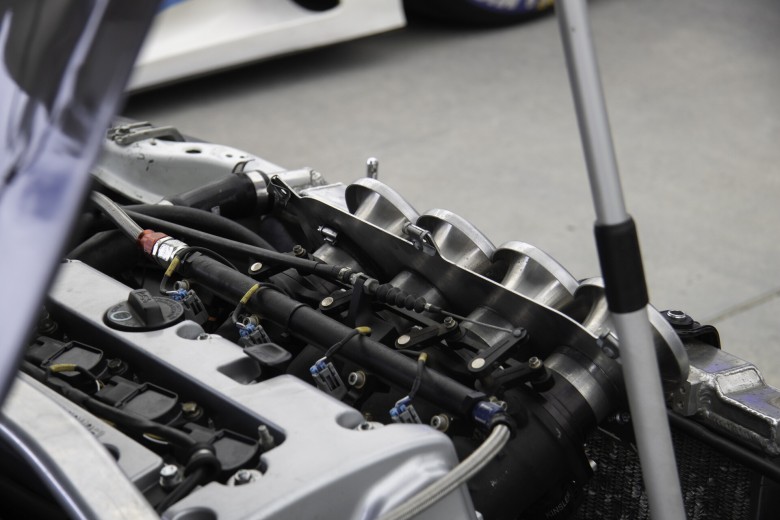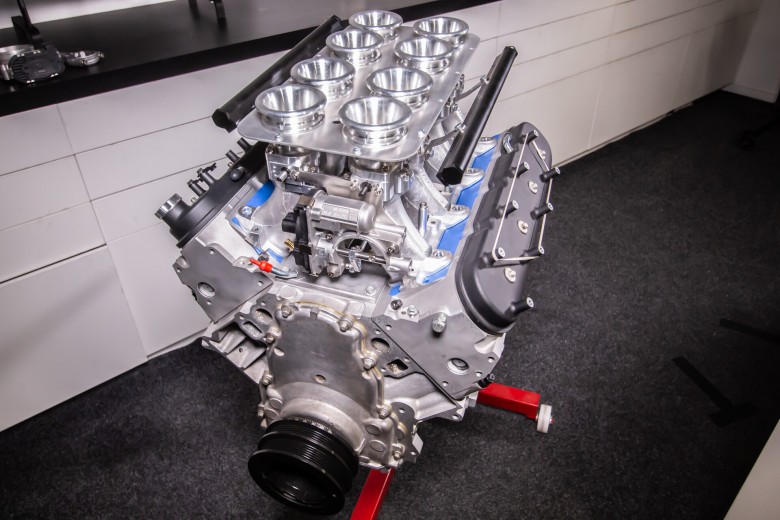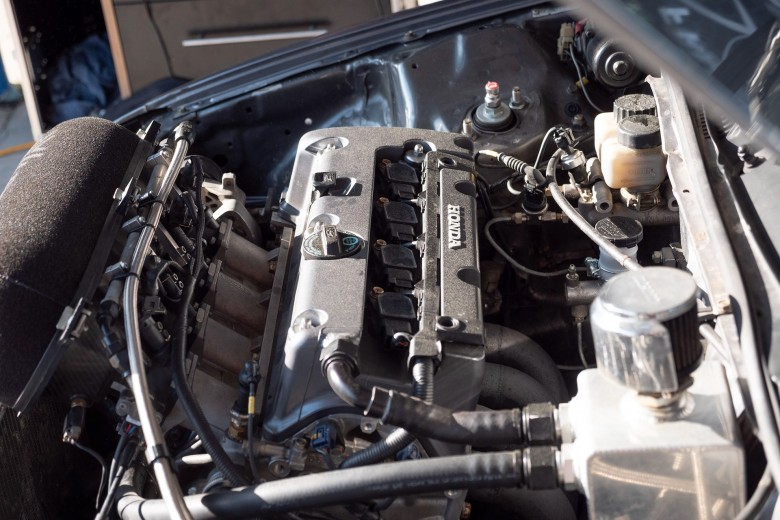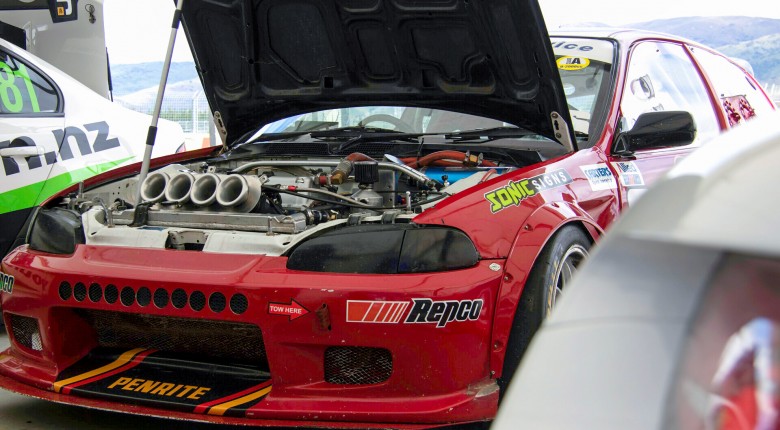The performance, the looks, and of course that glorious induction noise — individual throttle bodies are the ultimate option when it comes to naturally aspirated intake setups.
ITBs aren’t a new idea — after all, side draft carburetors work on the same principle and have been around since the 1930s. Over the last few decades, though, this tech has trickled down from the highest levels of motorsport and into the enthusiast realm.
This has given us real options in the high-performance and amateur motorsport world as more and more high-quality aftermarket ITBs become available.
In this article, we’ll be discussing all facets of individual throttle bodies. You’ll learn what they are, why you should and shouldn’t consider using them, as well as the challenges that come with tuning them (and how to do it properly).
What are Individual Throttle Bodies?
Individual throttle bodies (ITBs) refer to an intake arrangement where each engine cylinder has its own throttle body, instead of relying on a single large throttle body and common plenum chamber for all cylinders, as you’ll find in the vast majority of vehicles.

This allows for more precise control over your engine’s intake of air and reduces restrictions, potentially improving throttle response and increasing power output. However, the extent of these benefits depends on the specific engine and existing intake tract — more on that soon.
While there are plenty of aftermarket options out there from companies like Jenvey and EFI hardware, ITBs are fairly rare on stock vehicles. To find out which engines use ITBs from the factory, check out this complete list.
Pros of Individual Throttle Bodies
Let’s not pretend that any of us are above wanting something just for the “cool factor” — ITBs are unquestionably cool and there’s no shame in wanting to run them purely for that fact alone.
With that said, there are more benefits to individual throttle bodies than all the adoration and likes that’ll be waiting for you once you start posting your ITB conversion online.
Before we dive into the list, it’s important to understand that in many cases, how much of an improvement the benefits we’ll be discussing provide is going to be dependent on your existing setup.
For example, going from a heavily restricted non-performance-focused factory intake system to individual throttles will result in a more noticeable improvement in most metrics like power and throttle response when compared to a single-throttle body intake system designed for performance from the factory or that has already been optimised with aftermarket parts.

With that covered, let’s look at some of the key reasons ITBs are worth considering for your street or race car build:
-
Improved Throttle Response: ITBs allow for more precise and immediate control of the air entering each cylinder, leading to potentially quicker throttle response compared to a factory single throttle body setup and intake tract.
-
Increased Power Output: By reducing intake restrictions and improving airflow, ITBs can enhance engine breathing, potentially increasing horsepower and torque, especially at higher RPMs.
-
Power Delivery Flexibility: ITBs allow for the optimisation of power delivery characteristics. Adjusting the length of the intake runners can move the power band higher or lower to suit specific performance needs.
-
Better Air Distribution: Each cylinder gets its own throttle body, ensuring more even air distribution across all cylinders, which can improve engine efficiency and performance.
-
Improved High RPM Performance: ITBs can improve airflow at high engine speeds, making them particularly beneficial for engines that operate at high RPMs.
-
Aesthetic Appeal: There’s no argument — ITBs look amazing hanging off the side of an inline motor or perched on top of a V6, 8, 10, or 12. Not only do they look tough, but they also clean up the engine bay considerably as you’re able to get rid of a lot of factory clutter.
-
Sound: Turbo spool and blower whine are definitely great sounds, but is there any greater induction soundtrack than a high-strung naturally aspirated motor gulping down air through a set of howling ITBs?
-
Potential Weight Reduction: In some cases, ITB setups can be lighter than a traditional single throttle body intake system, contributing to overall vehicle weight reduction.
Cons of Individual Throttle Bodies
Fitting individual throttle bodies can offer several performance benefits, but as with most things in the car modification game, there will be some compromises made:
-
Cost: Compared to a single throttle body arrangement, there are many more parts required when converting to ITBs. High-cost items like the throttle bodies themselves, an intake manifold, throttle linkages, an ECU, injectors, wiring, and more all add up quickly. Costs will become exponentially higher if you’re not able to perform the labour and tuning yourself.
-
Complexity: ITBs are more complex to install, tune, and maintain. As per the previous point, this makes things more expensive, and also increases the difficulty of fault finding, maintenance, and tuning.
-
Tuning Difficulty: Properly tuning ITBs requires specialised knowledge. It can be challenging to achieve optimal performance and drivability due to how the system operates (Don’t worry, you can learn everything you need to know here).
-
Maintenance: With more components involved, ITBs can require more maintenance. Keeping all the throttle bodies synchronised and in good working condition can be more labour-intensive than maintaining a single throttle body.
-
Potential for Reduced Low-End Torque: While ITBs can provide an increase in high-end power, they can sometimes result in a loss of low-end torque. Again, this is highly dependent on the particular engine setup you’re working with and can be manipulated by the use of different length velocity stacks (trumpets).
-
Legal and Emissions Issues: In some regions, converting your engine to ITBs can cause the vehicle to fail emissions tests or make it non-compliant with local regulations, leading to legal issues and potential fines. If your ITBs are going on a race car, there may also be issues with class regulations, so it pays to double check before committing.
Engine Tuning with ITBs
Tuning a vehicle that uses individual throttle bodies presents some unique challenges.

Firstly, because there is no common inlet plenum shared across all cylinders, the use of a MAP sensor alone becomes problematic. With that said, it’s still a very good idea (but not strictly mandatory) to run a MAP sensor.
You do this by tapping into each runner between the intake valve and the throttle plate, then running these to a small common plenum or “balance bar” that you can use to even out all the individual pulses. MAP sensor readings can then be taken from this plenum to provide background compensation.
While many tuners will tell you that tuning using a MAP sensor for the main input works just fine with ITBs, this is not the case, particularly at part throttle. With a conventional plenum chamber, the MAP signal is providing a realistic reading of the air pressure when the intake valve opens.
On the other hand with ITBs, the volume between the throttle plate and intake valve is very small in comparison. This means that when the intake valves open on one cylinder you’ll see a significant drop in pressure on that cylinder as it consumes the air volume between the valves and the throttle plate.
Since the remaining intake valves are closed, however, the average MAP value doesn’t change much and hence is not a good representation of what’s happening on the cylinder that’s on the intake stroke. The result is that it’s all but impossible to maintain accurate control of part throttle mixtures.
Instead of MAP, it’s best to tune an ITB-equipped engine using alpha-N (alpha = throttle position and N = RPM) as the load axis for both fuel and ignition tables.
This is actually quite a straightforward way of tuning, however, you’ll need to consider the breakpoints used in your tables — the airflow through a throttle body is very non-linear, meaning you’ll see a very sharp increase in airflow as you move from 0% to perhaps 25% throttle opening.
On the other hand, from 80-100% there is likely very little change. This requires tight spacing of your breakpoints from 0-25% and more coarsely spaced breakpoints above this.
Before tuning can begin, it’s crucial that all your throttle bodies are perfectly balanced.
If they aren’t properly synchronised, you’re going to find that the car is terrible to drive at part throttle and will audibly miss or backfire at idle and cruise conditions, as some throttle butterflies are more open than others.
The best solution here is to pick up a carb balancing tool, which is inserted into the inlet trumpet and measures the air running through it.
The tool can then be inserted into each trumpet and adjustments made (most ITBs have a way of externally adjusting the amount that the butterfly is open) to ensure that they’re all even across the board.
Moving on, aside from the size (diameter) of the throttle bodies themselves, in which larger often equals more power but less torque, ITBs also give you the ability to harness the entire inlet tract to tune your engine’s power delivery characteristics.
This means by adjusting the length of the inlet trumpets you can effect changes to the volumetric efficiency (VE) of the engine — essentially ramming more or less air into it.
However, just like throttle body diameter, nothing comes for free. By favouring, say, optimised power and torque at higher RPMs, you will be doing this at the expense of performance at lower RPMs.
This is only a very surface-level look at tuning ITBs. If you want to know more about the actual tuning process, check out this ITB Tuning Explained webinar that goes into MUCH more detail.
How Can You Learn More About Individual Throttle Bodies?
Figuring out exactly which ITBs you’re going to need for your project and buying them is only the first step — there’s a whole lot more that needs to take place before you’ll have them up and running on your car.

The next jobs are going to be fitting, setting up, and tuning them. This can be complex work, but certainly not something that needs to be left to the professionals — setting up ITBs and tuning them is something you can learn to do yourself through High Performance Academy’s EFI tuning courses.
Start with "Introduction to Engine Tuning", then advance to the "EFI Tuning Fundamentals" course. You can also choose to bundle these together (along with “Understanding AFR”) and grab yourself a deal with the "Tuning Starter Package".







Comments
No one has commented on this page yet.